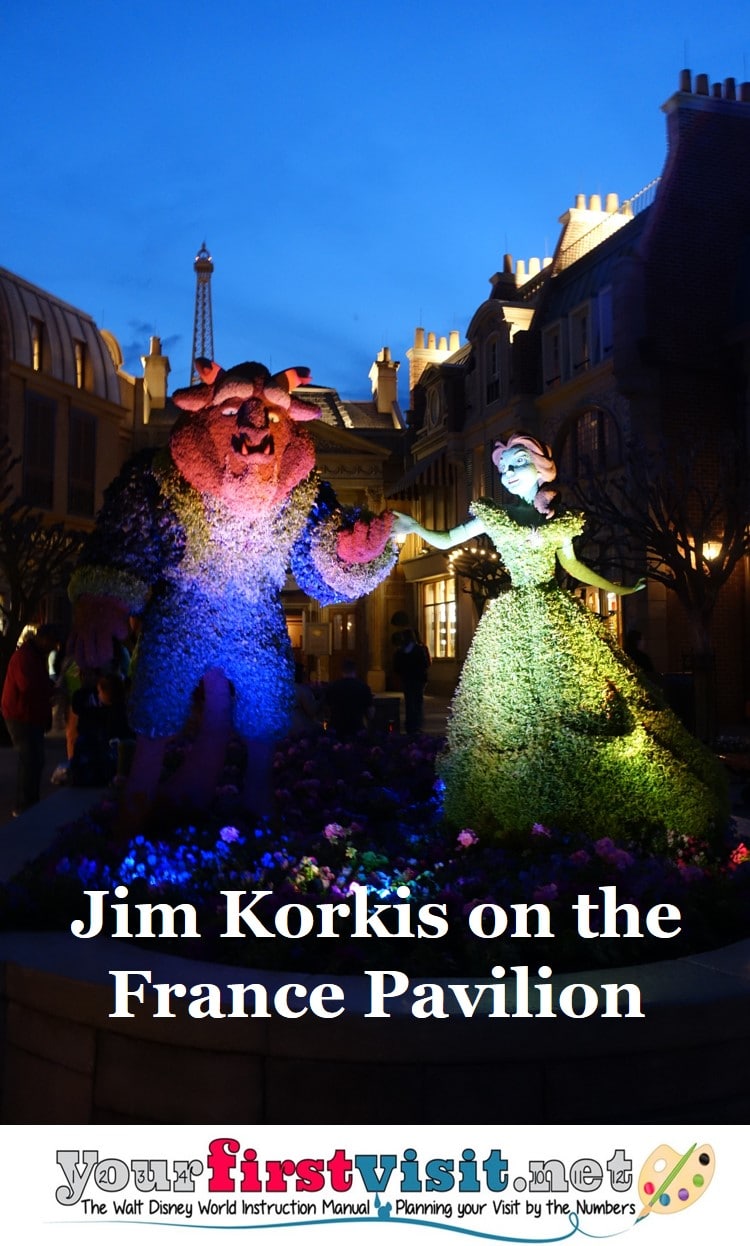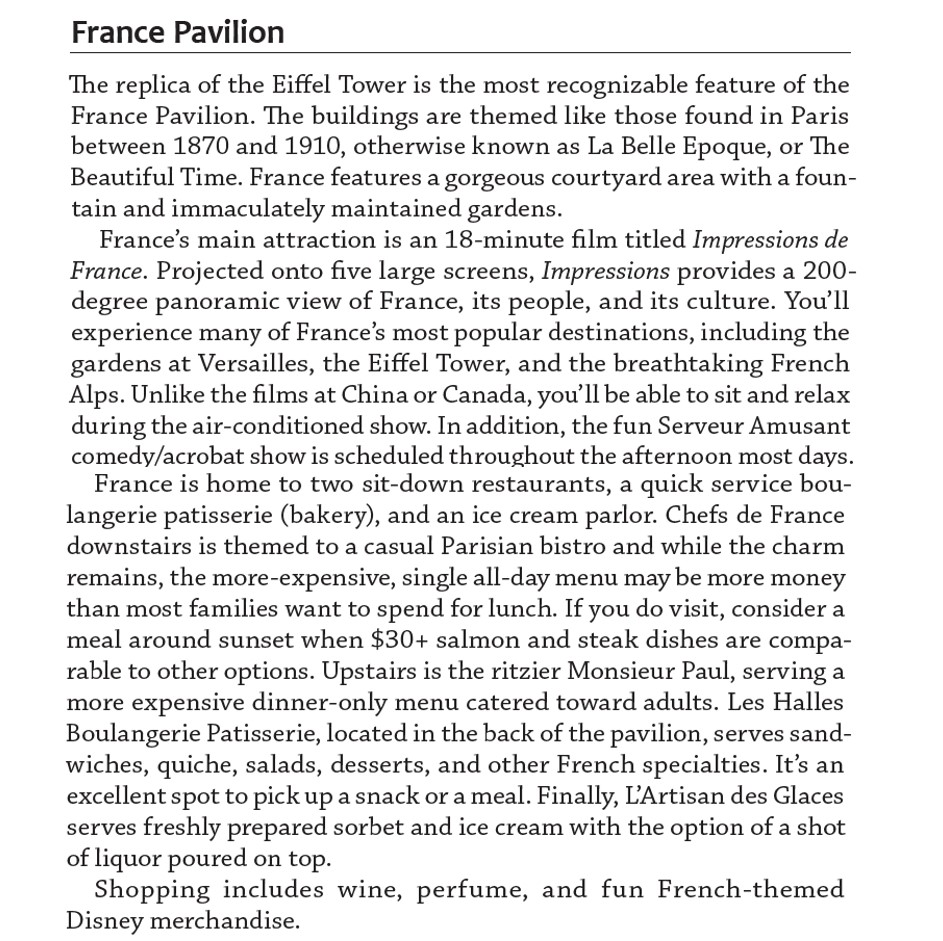A Friday Visit with Jim Korkis: The France Pavilion
By Dave Shute
Welcome back to Fridays with Jim Korkis! Jim, the dean of Disney historians and author of Jim’s Gems in The easy Guide, writes about Walt Disney World history every Friday on yourfirstvisit.net.
THE FRANCE PAVILION IN EPCOT’S WORLD SHOWCASE
By Jim Korkis
The France pavilion at Epcot was meant to capture springtime in Paris during the Belle Epoque, the “Beautiful Era” (1871-1914), a time of stability and optimism before World War I.
The International Gateway Bridge between the U.K. pavilion and France was meant to be reminiscent of the Pont des Arts archway pedestrian bridge that crossed the River Seine.
It was the first metallic bridge in Paris and was meant to resemble a suspended garden, with trees, banks of flowers, and benches. This historic monument was built in 1804 and demolished in 1981 because of structural damage and eventually re-built but with some significant differences.
Along the side of the river, there are items like an artist’s easel and canvas (an impressionist painting of the International Gateway) propped up against the wall with the artist’s bicycle nearby to create the impression that there is activity along the waterfront but that the people are just briefly away at the moment.

Architectural Designer Harry Webster, when he began designing the pavilion, thought to re-create the Place du Tetre, the artists’ colony near the cathedral of Sacre-Coeur, but decided the building would have dominated the skyline too much. He decided it would be more effective to have a “single exclamation point provided by the Eiffel Tower”.
The original Eiffel Tower in Paris was built in 1889 for the World’s Fair. Disney utilized the original blueprints and drawings of engineer Gustave Eiffel (who also designed the interior framework of the Statue of Liberty). One of the most famous landmarks in Paris, the Eiffel Tower was reconstructed at Epcot at one-tenth the scale of the original and rises 103 feet into the air. It includes replicas of tiny (non-working) elevators and turn-of-the century beacon lights.
Since guests are not allowed to go where the base of the structure would be, there was no reason to complete that part. The top of the tower actually rests on top of a building but its scale makes it look farther away and that other buildings in front are hiding the base so it seems complete. The actual tower is only 69 feet high on top of a 34 foot tall building.
When the Dolphin resort was built, guests could see the back of the pavilion, so additions had to be made to conceal the fact that the bottom of the tower was on top of a building.
The Eiffel Tower is more tan and pinkish than the one in Paris today. The reason is that it is meant to resemble the coloring of what it looked like in the late 1800s.
The schedule for filming Impression de France, the film shown in the pavilion, had to be readjusted because the iconic tower was soon to undergo a three year renovation. Since the film required four scenes of the tower, the shooting schedule was shifted so that those scenes were shot first.
The park bordering the canal along the right side of the pavilion was inspired by the famous painting “A Sunday Afternoon on the Island of La Grande Jatte” by pointillist artist Georges Seurat.
Behind Les Chefs de France is La Petite Rue (“The Little Street”) to showcase a typical rural street. It was meant to convey the design and craftsmanship of a street built without the aid of metropolitan construction work but “with strong farming hands, forming rustic and rugged looking exteriors and natural and unpretentious interiors”.
* * * * *
Thanks, Jim!
Here’s the scoop on France from our book, The easy Guide to Your Walt Disney World Visit:
And there’s more from Jim on World Showcase here. Come back next Friday for more from Jim Korkis!
In the meantime, check out his books, including his latest, Secret Stories of Disneyland, his Secret Stories of Walt Disney World: Things You Never You Never Knew, which reprints much material first written for this site, and his contributions to The easy Guide to Your Walt Disney World Visit, all published by Theme Park Press.
Follow yourfirstvisit.net on Facebook or Twitter or Pinterest!!






0 comments
Comment by typing in the form below.
Leave a Comment | Ask a Question | Note a Problem